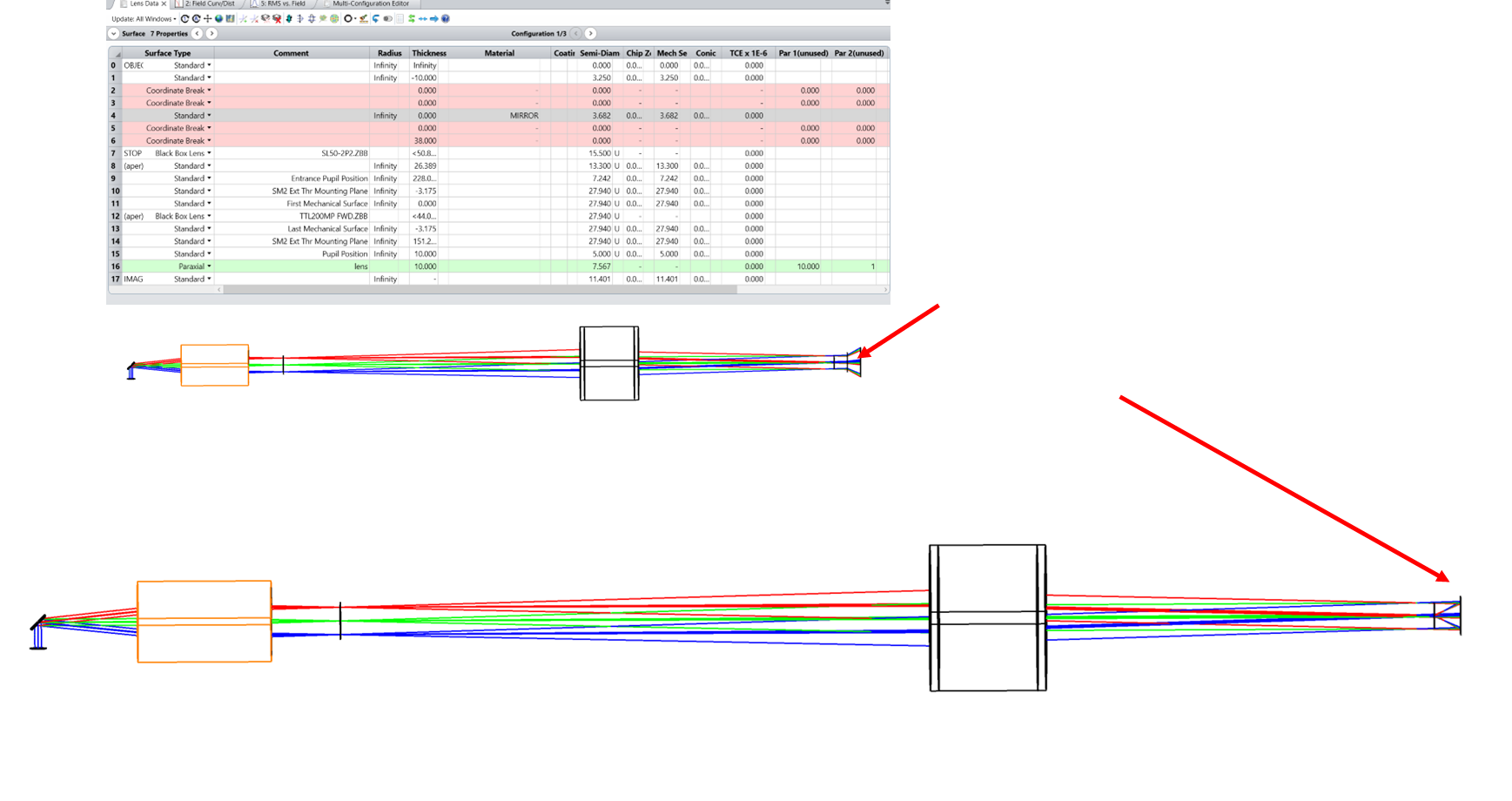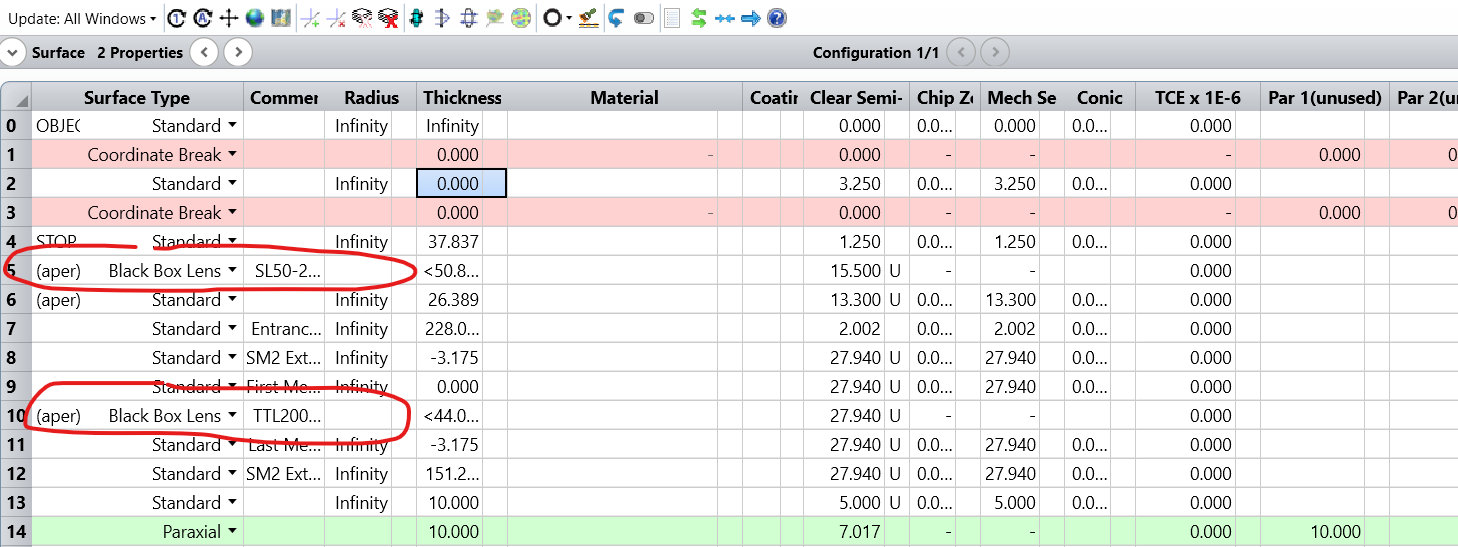Black box surfaces do not work properly if a mirror is placed in front of them, unless the black box surface was created while the system was in mirror space (n=-1). If you compare to your post from last week where you had 2 scanning mirrors, the black box surfaces were behaving properly because after 2 reflections the black box surfaces were returned to n=1 space. Essentially, the black box surfaces will behave in whatever space they were created in, but not after an odd number of mirror reflections.
If you want to use these files with only one mirror prior to the black box surfaces, you will need to contact Thorlabs tech support and ask them to create some black box files for you where there is a mirror in front of the lens. They have done this in the past, but that was when I was the employee generating the black box files. I am no longer at Thorlabs, but hopefully somebody there can help you out.










